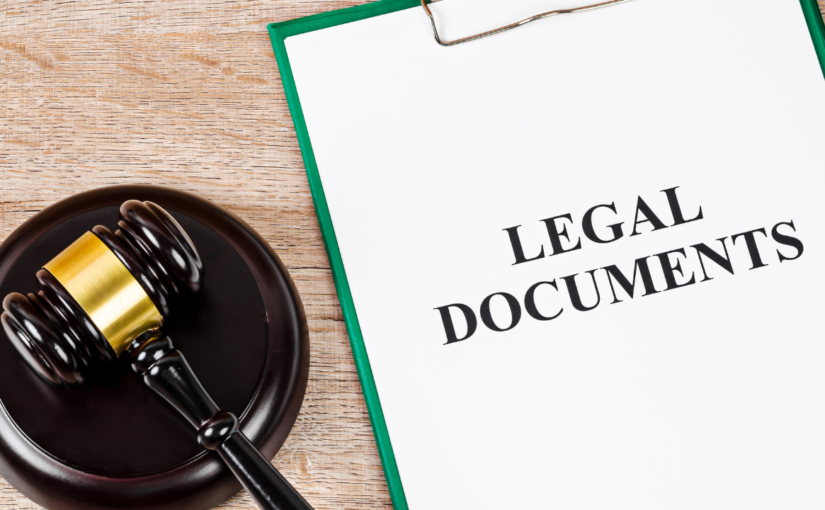
23-Jun-2023
All Types Of Legal Documents & Forms In A Law Firm
Legal Document Bullet Points:
- Legal documents and forms are essential for any law firm, as they are used to document legal agreements, proceedings, and transactions. It is crucial to keep these documents up-to-date and accurate to ensure legal compliance and protect the interests of all parties involved.
- There are various types of legal documents and forms used in a law firm, such as contracts, pleadings, motions, and affidavits. Each of these documents serves a different purpose and requires specific legal language and formatting to be considered valid.
- To optimize the use of legal documents and downloaded forms in a law firm, it is essential to have a standard template for each type of document, establish a streamlined process for document creation and management, and ensure that all staff members are trained in the proper use of legal documents and forms.
Five Facts About All Types Of Legal Documents & Forms In A Law Firm:
Legal documents safeguard both parties’ rights and obligations while offering some form of recourse if things don’t go as expected.
Contracts can become unenforceable if they don’t conform to federal, state and local rules.
A well-written legal document should contain provisions that demonstrate an offer, acceptance and an exchange of consideration.
The eight basic types of legal documents include: Nondisclosure Agreements, Consulting Agreements, Employment Contracts, Service Contracts, Sales Contracts, Asset Purchase Agreements, Terms of Service Agreements, and Privacy Policies.
Legal documents are essential to protecting your business and building trust with your customers.
FAQs about All Types Of Legal Documents & Forms In A Law Firm
What are legal documents and why are they important in a business setting?
Legal documents are signed contracts between two or more parties that define the rights and obligations of each party, safeguarding their interests and offering some form of recourse in case of disputes. In a business setting, legal documents provide a written record of agreements and transactions, protecting the interests of both the company and its clients, employees, or partners.
What is the four-step process to prepare a legal document?
The four-step process to prepare a legal document includes selecting the proper legal document, reviewing local rules and laws, having a conversation with the other party, and drafting the legal document. This process ensures that the legal document is appropriate for the transaction, complies with legal requirements, reflects the terms agreed by both parties, and provides a clear and detailed written record of their agreement. Skilled legal document services can be found in legal service directories or with google search
What are the basic types of legal documents?
The basic types of legal documents in a business setting include nondisclosure agreements, consulting agreements, employment contracts, service contracts, sales contracts, asset purchase agreements, terms of service, and privacy policies. These documents provide legal protection and clarity for common business transactions and relationships. Many of these required the assistance of a skilled notary public.
What provisions do legal documents typically include?
The provisions of legal documents can vary widely depending on the type of document and the specific transaction. However, most legal documents include provisions that demonstrate an offer, acceptance, and exchange of consideration, as well as identifying the parties involved, outlining their rights and duties, specifying costs and payment terms, and including clauses for dispute resolution, warranties, and signatures. Additional provisions may be required for more complex transactions.
What are some best practices for managing legal documents in a law firm?
Some best practices for managing legal documents in a law firm include implementing a document management system that allows for easy organization, retrieval, and collaboration, establishing clear policies for document retention and destruction, automating document drafting and review processes, conducting regular audits of document storage and archiving practices, and training staff on proper document handling and security protocols. By following these best practices, law firms can ensure efficient and effective management of their legal documents.
What are some examples of common legal forms and documents used in estate planning?
Some common legal forms and documents used in estate planning include Last Will and Testament, Living Will, Power of Attorney, Health Care Proxy, Enhanced Life Estate Deeds, Revocable Living Trust, Irrevocable Trust, Advance Directive, HIPAA Authorization, Beneficiary Designation Form, Guardianship Designation Form, Estate Inventory Worksheet, Probate Forms, Estate Tax Return Form, Affidavit of Heirship, Release and Waiver Forms, Trustee Acceptance Form, Executor/Personal Representative Forms, Estate Accounting Forms, and Claim for Damages Form. These documents allow individuals to specify their wishes for their estate and medical care, designate beneficiaries and guardians, and manage their assets and liabilities.
*Noble Notary & Legal Document Preparers Can Assist With Your Documents, However are Non-lawyers & Cannot Advise You Of Your Rights or Remedies.
Leave a Reply